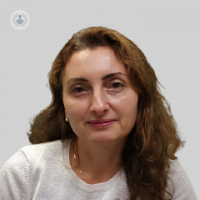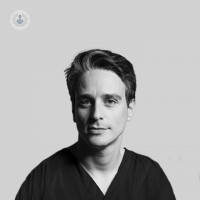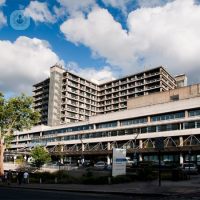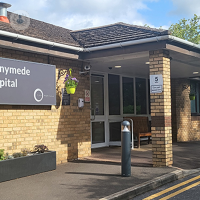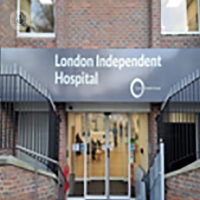What are eyelid lumps?
Eyelid lumps can take different forms. There are a number of different types of eyelid lumps, which have varying causes. Examples include:
- Stye
- Chalazion (plural: chalazia)
- Insect bite
- Swelling due to injury/after an operation
- Chickenpox or shingles
- Mole
- Freckle
- Xanthelasma
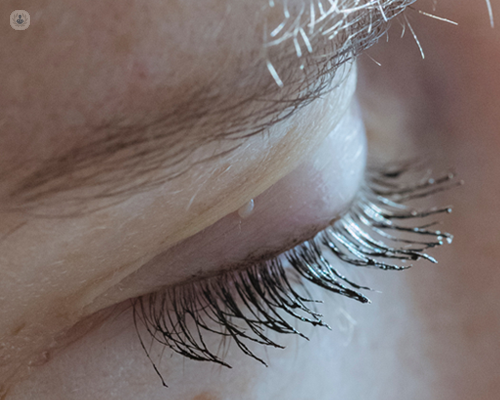
What are the symptoms of eyelid lumps?
Styes are small, painful lumps on the edge of the eyelid. They may be red and swollen due to infection, and are filled with yellow pus, like a pimple. They may cause your eye to water and become red, but should not impair the vision.
Chalazia are usually hard, tender lumps on the eyelid that can vary in size and location on the eyelid. The eyelid often feels heavy and the patient may experience increased tearing. Blisters or scabs, accompanied by a rash on the body is usually indicative of shingles or chickenpox.
What does it mean if I have an eyelid lump?
Different types of eyelid lumps have different causes:
- Styes are caused by a bacterial infection of an oil gland in the eyelid.
- A chalazion occurs when oil glands in the eyelid become blocked due to inflammation (blepharitis).
- Darker patches that appear to be moles or freckles should be checked out if they change size, shape, or colour, as they can sometimes be cancerous.
Do eyelid lumps go away?
Lumps on the eyelids are relatively common, and most go away by themselves in a matter of days or weeks.
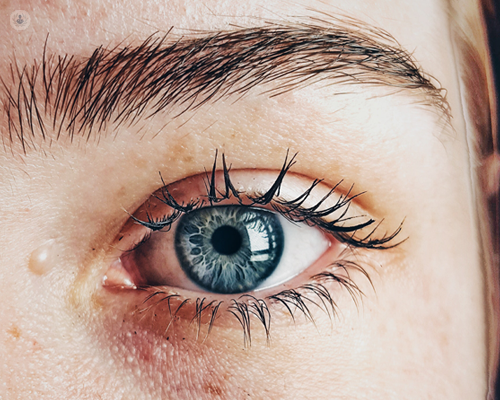
Is an eyelid lump serious?
They can be. Visit your doctor immediately if you notice that the lump is an unusual colour, or seems to be changing shape or colour. Also, if you have a stye or chalazion that's large or painful and doesn't go away, your doctor may need to prescribe antibiotics.
What's the difference between a stye and chalazion?
Usually, styes are infected eyelash follicles, meaning that the edges of the eyelids are inflamed. Whereas a chalazion is caused by an obstruction of the eyelid's oil gland means that it becomes enlarged, with the problem occurring deep in the eye lid.
Can eyelid lumps be prevented?
The risk of developing styes and chalazia can be reduced by maintaining good eyelid hygiene. This can be achieved by cleaning the edges of the eyelid daily with a warm, moistened flannel or cotton bud.
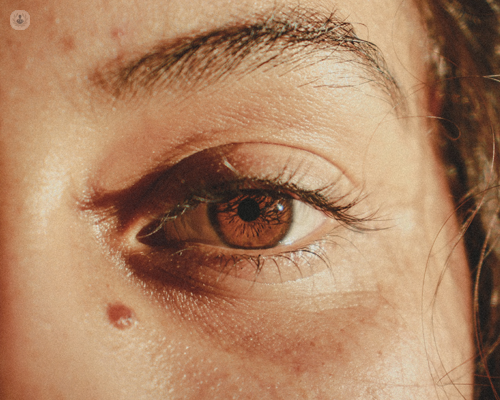
How are eyelid lumps treated?
The majority of lumps, including styes, chalazions, and insect bites, clear up by themselves within a few weeks. Warm compresses and keeping the eyelid clean can help this process. One self-treatment recommended for styes is to soak a flannel in warm water and hold it against the eye for five to 10 minutes and repeat this process several times a day.
In cases of severe bacterial infection, antibiotics may be prescribed by the doctor. Large, persistent eye lumps may have to be drained surgically under local anaesthetic. Similarly, if the lump is identified as skin cancer, surgical treatment may be necessary.
Which type of specialist treats eyelid lumps?
Ophthalmologists diagnose and treat the majority of conditions affecting the eyes and eyelids. If the cause of the lump turns out to be cancerous or a condition that affects other parts of the body, other specialists may be involved in treating the condition.
02-21-2019 03-23-2023Eyelid lump
Mrs Kapka Nenova - Ophthalmology
Created on: 02-21-2019
Updated on: 03-23-2023
Edited by: Sophie Kennedy
What are eyelid lumps?
Eyelid lumps can take different forms. There are a number of different types of eyelid lumps, which have varying causes. Examples include:
- Stye
- Chalazion (plural: chalazia)
- Insect bite
- Swelling due to injury/after an operation
- Chickenpox or shingles
- Mole
- Freckle
- Xanthelasma

What are the symptoms of eyelid lumps?
Styes are small, painful lumps on the edge of the eyelid. They may be red and swollen due to infection, and are filled with yellow pus, like a pimple. They may cause your eye to water and become red, but should not impair the vision.
Chalazia are usually hard, tender lumps on the eyelid that can vary in size and location on the eyelid. The eyelid often feels heavy and the patient may experience increased tearing. Blisters or scabs, accompanied by a rash on the body is usually indicative of shingles or chickenpox.
What does it mean if I have an eyelid lump?
Different types of eyelid lumps have different causes:
- Styes are caused by a bacterial infection of an oil gland in the eyelid.
- A chalazion occurs when oil glands in the eyelid become blocked due to inflammation (blepharitis).
- Darker patches that appear to be moles or freckles should be checked out if they change size, shape, or colour, as they can sometimes be cancerous.
Do eyelid lumps go away?
Lumps on the eyelids are relatively common, and most go away by themselves in a matter of days or weeks.

Is an eyelid lump serious?
They can be. Visit your doctor immediately if you notice that the lump is an unusual colour, or seems to be changing shape or colour. Also, if you have a stye or chalazion that's large or painful and doesn't go away, your doctor may need to prescribe antibiotics.
What's the difference between a stye and chalazion?
Usually, styes are infected eyelash follicles, meaning that the edges of the eyelids are inflamed. Whereas a chalazion is caused by an obstruction of the eyelid's oil gland means that it becomes enlarged, with the problem occurring deep in the eye lid.
Can eyelid lumps be prevented?
The risk of developing styes and chalazia can be reduced by maintaining good eyelid hygiene. This can be achieved by cleaning the edges of the eyelid daily with a warm, moistened flannel or cotton bud.

How are eyelid lumps treated?
The majority of lumps, including styes, chalazions, and insect bites, clear up by themselves within a few weeks. Warm compresses and keeping the eyelid clean can help this process. One self-treatment recommended for styes is to soak a flannel in warm water and hold it against the eye for five to 10 minutes and repeat this process several times a day.
In cases of severe bacterial infection, antibiotics may be prescribed by the doctor. Large, persistent eye lumps may have to be drained surgically under local anaesthetic. Similarly, if the lump is identified as skin cancer, surgical treatment may be necessary.
Which type of specialist treats eyelid lumps?
Ophthalmologists diagnose and treat the majority of conditions affecting the eyes and eyelids. If the cause of the lump turns out to be cancerous or a condition that affects other parts of the body, other specialists may be involved in treating the condition.
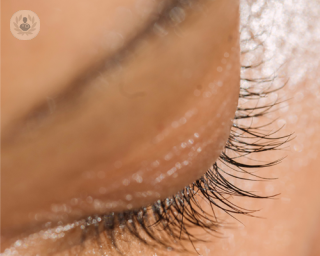

How are eyelid cysts treated?
By Miss Sengal Nadarajah
2024-10-31
What is an eyelid cyst and how is it treated? Consultant ophthalmologist Miss Sengal Nadarajah, who practises in Surrey and Worthing shares her expertise on the causes and treatment of eyelid cysts. See more
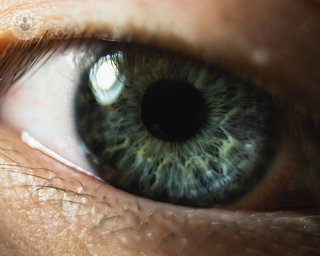

All about eyelid lumps
By Mr Robert Peden
2024-10-31
Eyelid lumps can appear in many forms and have a range of different causes. While eyelid lumps are generally benign, some may cause symptoms or be bothersome in appearance. Here to provide an expert insight into eyelid lumps is Mr Robert Peden, renowned consultant ophthalmic and oculoplastic surgeon. See more


Eyelid lumps and bumps: A comprehensive guide
By Ms Aoife Naughton
2024-10-30
As a medical professional, I often encounter patients concerned about lumps or bumps on their eyelids. While these can be alarming, it's essential to understand that they often have benign causes and can be effectively managed. Revered consultant ophthalmic and oculoplastic surgeon Ms Aoife Naughton provides a guide to the various types of eyelid lumps and bumps, their causes, and what you can do about them. See more
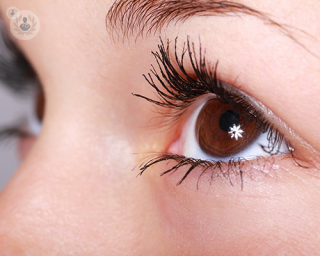

What are floaters, and how do they affect vision?
By Mr Stephen Lash
2024-10-30
In this article here, Mr Stephen Lash, a highly accomplished and skilled consultant ophthalmologist, explains what floaters are, details what they look like, and tells us how they affect one's vision. See more
Experts in Eyelid lump
-
Mr Raj Mukherjee
OphthalmologyExpert in:
- Cataract surgery
- Macular degeneration (AMD)
- YAG laser capsulotomy
- Diabetic retinopathy
- Eyelid lump
- Dry eye
-
Dr Jasvir Grewal
OphthalmologyExpert in:
- Oculoplastics
- Cataracts
- Eyelid lump
- Eye examination
- Eyelid cancer
- Glaucoma
-
Dr Nick Koutroumanos
OphthalmologyExpert in:
- Oculoplastics
- Blepharoplasty
- Watery eyes
- Oculo-facial plastic and cosmetic surgery
- Eyelid lump
- Ptosis (droopy eye)
-
Mr Colin Vize
OphthalmologyExpert in:
- Oculoplastics
- Cataract surgery
- Watery eyes
- YAG laser capsulotomy
- Eyelid malpositions
- Eyelid lump
-
Mr Eric Barnes
OphthalmologyExpert in:
- Cataracts
- Watery eyes
- YAG laser capsulotomy
- Eyelid lump
- Botulinum toxin (Botox™)
- Eyelid malpositions
- See all

The Royal Free Hospital
The Royal Free Hospital
Pond Street, Hampstead. NW3 2QG
No existe teléfono en el centro.
By using the telephone number provided by TOP DOCTORS, you automatically agree to let us use your phone number for statistical and commercial purposes. For further information, read our Privacy Policy
Top Doctors

The Runnymede Hospital - part of Circle Health Group
The Runnymede Hospital - part of Circle Health Group
Guildford Street, Ottershaw, Lyne, Chertsey KT16 0RQ
No existe teléfono en el centro.
By using the telephone number provided by TOP DOCTORS, you automatically agree to let us use your phone number for statistical and commercial purposes. For further information, read our Privacy Policy
Top Doctors

The London Independent Hospital - part of Circle Health Group
The London Independent Hospital - part of Circle Health Group
1 Beaumont Square, Stepney Green
No existe teléfono en el centro.
By using the telephone number provided by TOP DOCTORS, you automatically agree to let us use your phone number for statistical and commercial purposes. For further information, read our Privacy Policy
Top Doctors
-
The Royal Free Hospital
Pond Street, Hampstead. NW3 2QG, Central LondonExpert in:
- General Surgery
- Orthopaedic surgery
- Robotic Surgery
- Dermatology
- Obstetrics and Gynaecology
- Paediatrics
-
The Runnymede Hospital - part of Circle Health Group
Guildford Street, Ottershaw, Lyne, Chertsey KT16 0RQ, ChertseyExpert in:
- Cardiology
- Hand surgery
- General Surgery
- Maxillofacial Surgery
- Oral surgery
- Orthopaedic surgery
-
The London Independent Hospital - part of Circle Health Group
1 Beaumont Square, Stepney Green, East LondonExpert in:
- Cataracts
- Bariatric Surgery
- Maxillofacial Surgery
- Neurological spinal surgery
- Orthopaedic surgery
- Orthopaedic spinal surgery
- See all
- Most viewed diseases, medical tests, and treatments
- Minimal access surgery (keyhole surgery)
- Head and neck cancer
- Neck lump
- Acellular dermal matrix (ADM)
- Prepectoral breast reconstruction
- One Stop Breast Clinic
- Botulinum toxin (Botox™)
- Migraine
- FUE hair transplant
- Carpal tunnel syndrome
